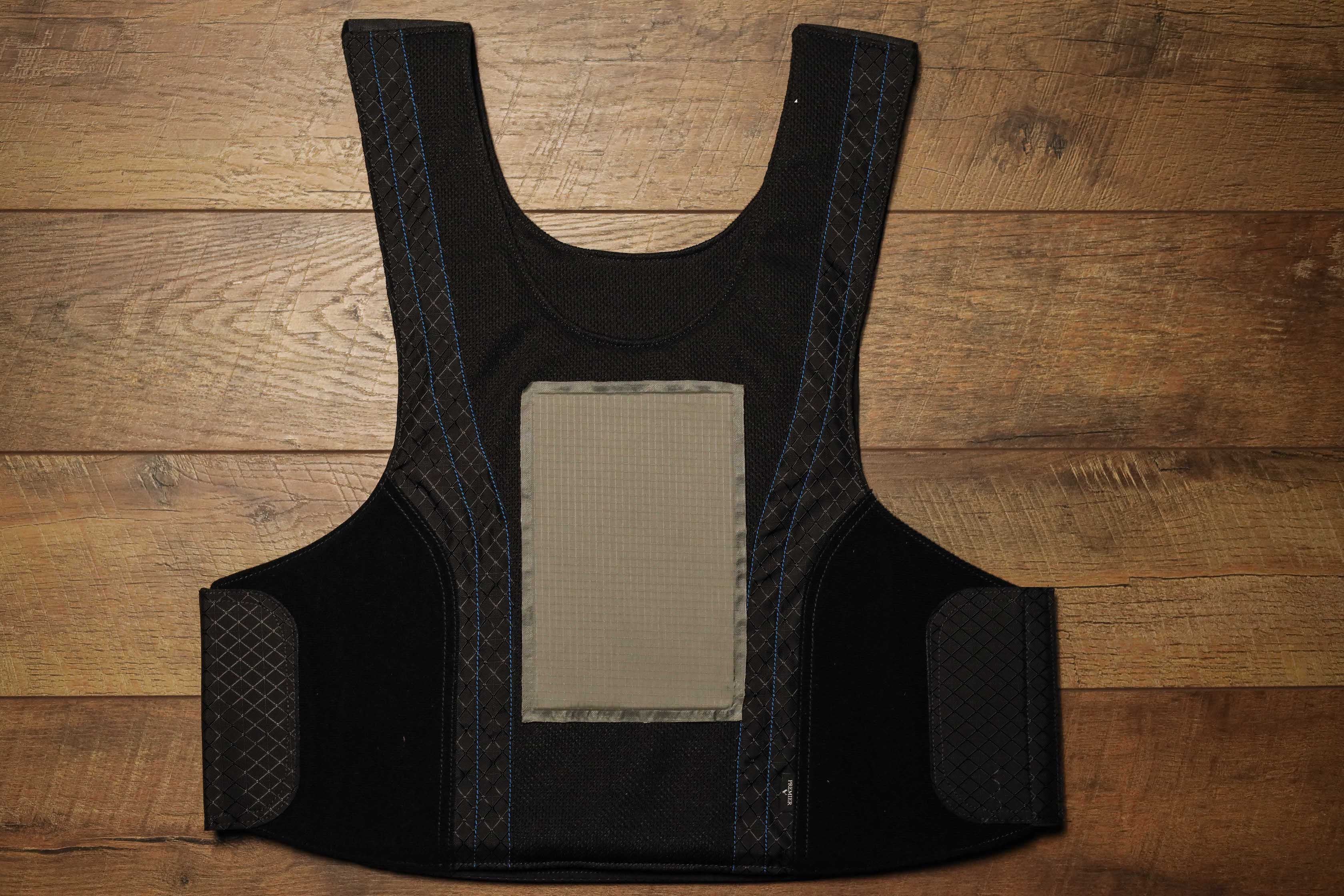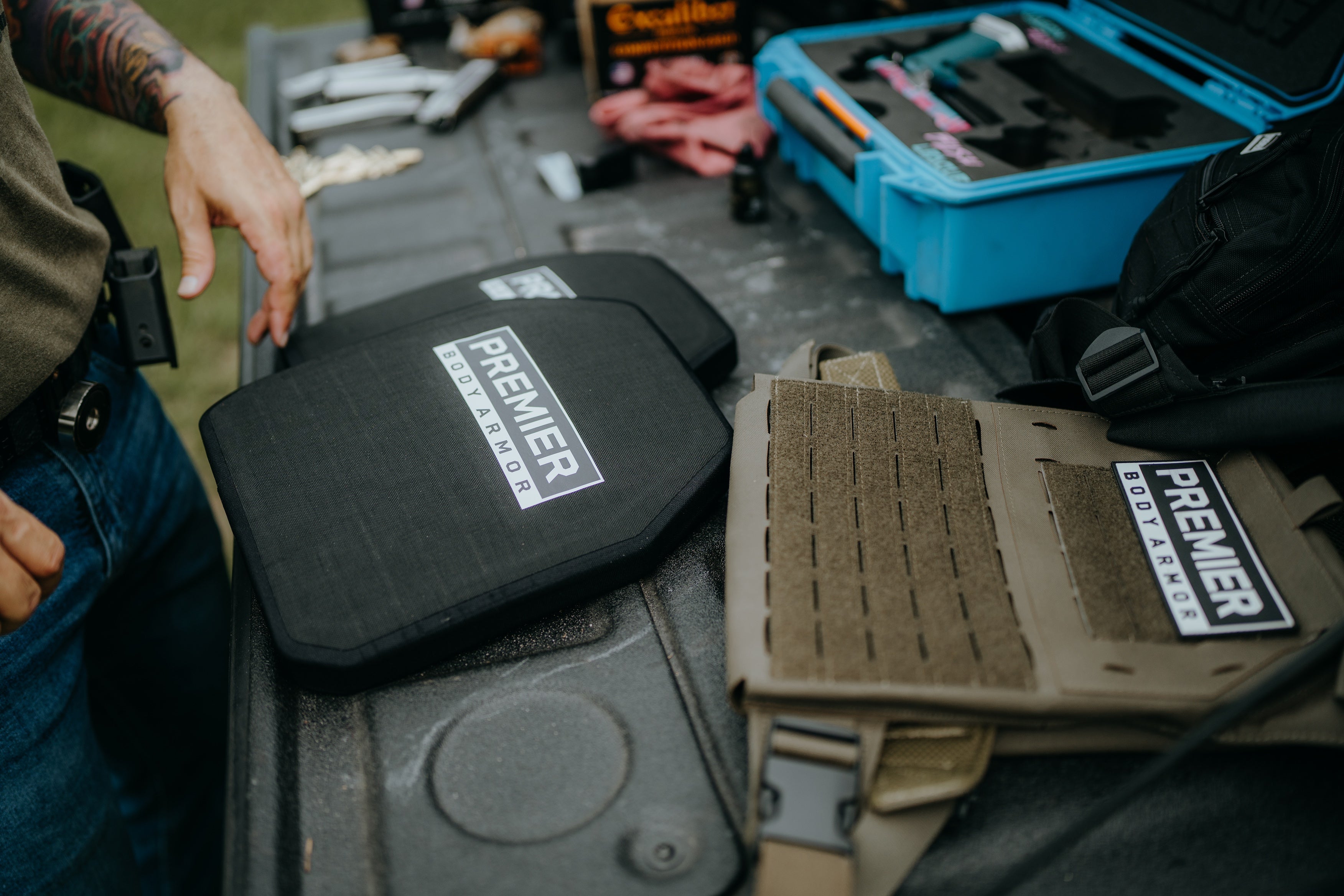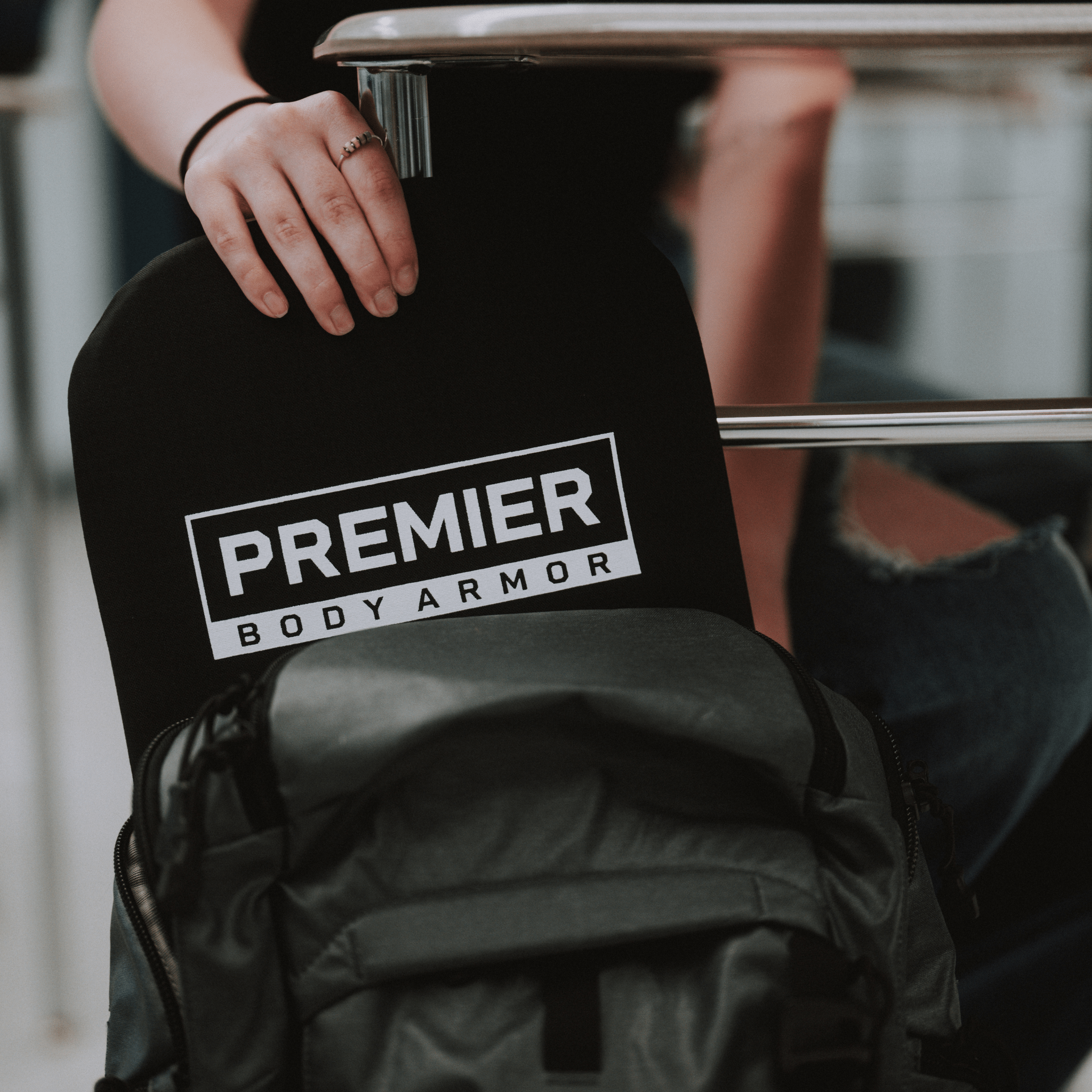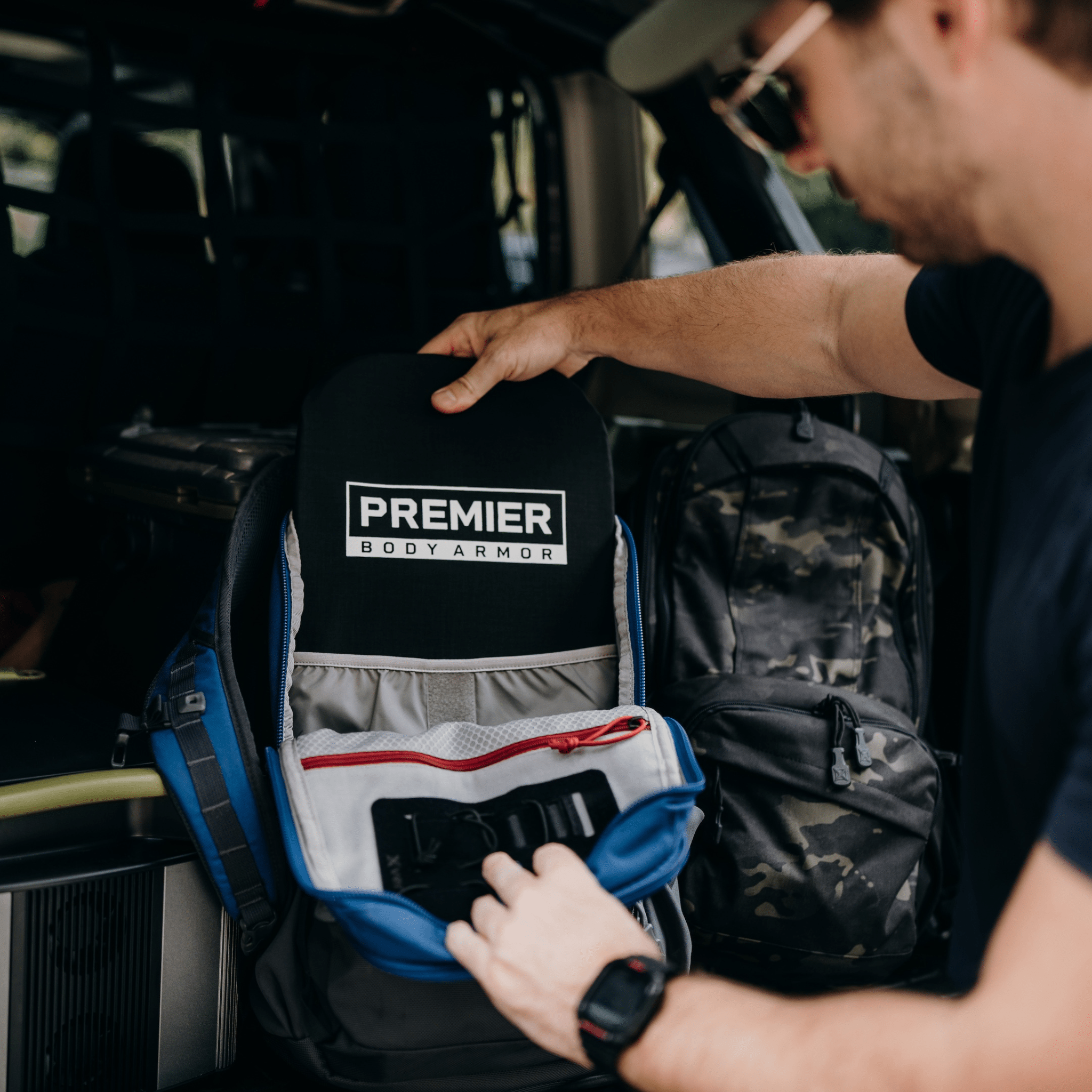Understanding Backface Deformation in Body Armor
What is Backface Deformation?
Post by Andrew Schuler
Back face deformation (BFD) measures the deformation in body armor that occurs on the back side when a bullet strikes it. Simply put, BFD measures how much the armor "gives" or how deep the indentation is when a bullet strikes the front side. BFD is typically measured in millimeters and indicates the amount of energy transferred through the armor and into the wearer's body.
How does backface deformation happen?
As mentioned above, backface deformation happens when a bullet strikes the front side of the armor and causes deformation of the back side of the armor. This happens because the energy from the bullet is transferred through the armor material, causing it to deform. Bullet velocity and BFD in body armor are closely related.
In general, a higher velocity bullet will produce a deeper BFD, as the armor absorbs more impact energy from the bullet. It basically comes down to one of the simple laws of physics: The heavier a projectile is and the faster it goes, the more energy it bears.
What standard is used to measure BFD?
The standard used to measure BFD in body armor is NIJ Standard-0101.06, developed by the National Institute of Justice (NIJ) in the United States. In testing for BFD, the NIJ fires test rounds at a body armor sample placed before a block of ballistics clay. Then, using high-speed cameras and special software to ensure accuracy, researchers measure the depth of the indentation in the clay backing material behind the armor to determine the BFD. They do this by measuring from the center of the indentation to the closest point on the original surface of the clay block.
Why are NIJ standards for BFD important?
The NIJ test simulates the energy transfer from the bullet to the armor and the wearer's body. The test results are used to determine the performance of the body armor in terms of its ability to absorb energy and reduce the risk of injury. To pass the NIJs standards for backface deformation in body armor, a body armor system must not create a BFD depth greater than 44 millimeters (mm) or about 1.7 inches (in.). Manufacturers and body armor suppliers must meet NIJ standards for BFD before it can be considered compliant and sold to law enforcement, the military, and other customers like you.
What damage can BFD cause?
Back face deformation can have severe consequences for the safety and well-being of a person. It is critical to wear protective gear that can withstand high-velocity impacts. Blunt force trauma is the most likely complication BFD can inflict on the human body, which is, in simple terms, an injury caused by a direct impact on the body without a sharp object breaking the skin. In this case, blunt force trauma happens when the bullet’s energy produces a forceful blow to the body.
If a person is wearing body armor that experiences BFD, the wearer can suffer from broken bones and, more severely, internal organ damage in the cardiac box if blunt force trauma occurs.
Materials and their Impact on BFD
There are several types of ballistic protection, each with its own characteristics and protection level. Regarding back face deformation, the level of impact the armor type can withstand is important to consider, as it provides information about the ability of the armor to protect the wearer. A low BFD indicates that the armor has effectively absorbed the energy of the impact and prevented it from reaching the wearer's body. In comparison, a high BFD can indicate that a significant amount of energy has been transferred into the wearer's body, which can result in serious injury or, sometimes, even death.
Different types of materials used in body armor
Different types of body armor affects backface deformation differently, each with its own set of pros and cons.
Soft Body Armor
Soft ballistic panels typically made of materials like Kevlar, Spectra, or Aramid, and is designed to protect against lower velocity threats, such as common handgun and shotgun rounds. Level II and level 3A soft armor typically has a lower BFD, as its ballistic resistance design absorbs the impact's energy and prevents it from reaching the wearer's body.
Rifle-Rated (hard) Body Armor
Hard armor is typically made of materials like ceramic plates, steel, or polyethylene and is designed to protect against high-velocity threats, such as rifle rounds. Hard armor usually has a higher BFD, as it does not absorb the energy of the impact. Instead its bulletproof properties deflect it away from the wearer's body.
Stand Alone Plates
Stand-alone plates are a piece of personnel protective equipment that can be worn independently or in conjunction with a soft armor carrier. These plates typically have a high BFD and can add additional protection when paired with soft body armor.
All that said, the specific requirements and intended use of the armor, as well as the impact on BFD, should be considered when selecting your body armor.
Quality material vs adding foaming
There are a lot of body armor options available, some using fewer ballistic material layers to try to keep costs down. This comes at a price. Cheaper body armor may still stop the bullet from penetrating the ballistic material, but it won't necessarily pass the back-face deformation measure of the NIJs Standard-0101.06. By adding a foam layer to the ballistic package, the body armor technically passes the NIJs standard and enters the market. This isn't because the armor is up to par, though. Quite the contrary: they pass the testing, but the armor is actually inferior.
At Premier Body Armor, we recommended a simple yet effective test to determine if your body armor is of high quality – which, again, is all-important in lessening the impact of BFD – it's called the pinch test. All you do is pinch your ballistic vest. If you feel foam, it's a low-quality product.
Why back face deformation matters and what to do about it
In short, back face deformation is the term used to describe the indentation made on the interior of the armor as a result of energy transfer from a projectile striking it. BFD is important because it can determine the extent of injury to the wearer in the event of a shooting or impact.
Remember, a great way to reduce BFD is by adding a trauma pad to your body protection system. A commonly used add-on item, the trauma pad can absorb and dissipate some of the energy from a projectile impact, reducing the risk of blunt force trauma.

If you want to include a trauma pad in your body armor system, it is important to know if your bulletproof vest or plate carrier comes with, or has a spot for it. At Premier Body Armor, many of our body armor products come with trauma pads already included, ensuring you have the utmost protection.











Excellent explanation and description of BFD. This makes total sense when you think about it. Would be something many people would not think of in the selection process.
Leave a comment